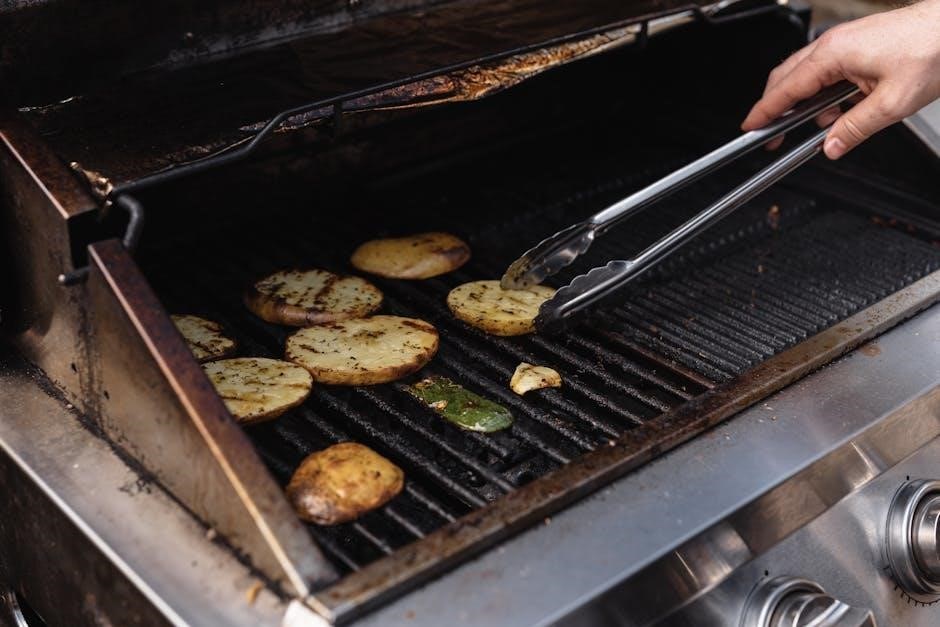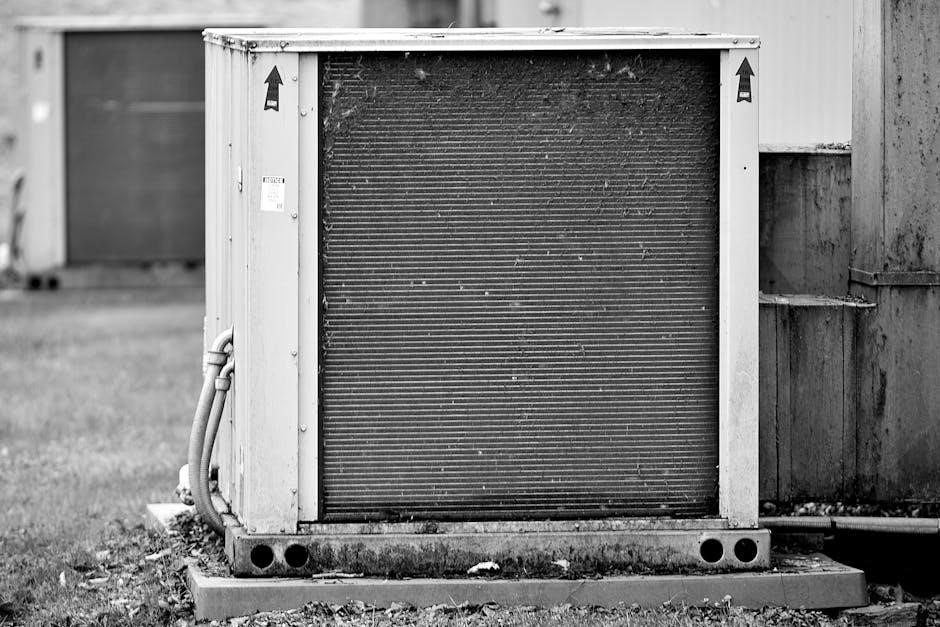The George Foreman grill is a popular appliance known for its speed and health benefits. This guide offers a comprehensive overview of temperature management for optimal cooking. Understanding the temperature range and settings is crucial for achieving perfectly grilled foods every time.
The George Foreman grill has become a household name, celebrated for its ability to cook food quickly and reduce fat content. Its design, featuring sloped grilling surfaces, allows excess fat to drain away from the food, promoting healthier meals. These grills use direct heat from both the top and bottom plates, cooking food simultaneously.
This unique cooking method significantly reduces grilling time compared to traditional grilling. The appliance’s popularity stems from its ease of use and effectiveness in preparing a variety of foods. The George Foreman grill is versatile, suitable for cooking everything from burgers and steaks to chicken, vegetables, and even paninis.
Understanding how to use the George Foreman grill effectively begins with mastering temperature control. While some models have adjustable temperature settings, others operate at a fixed temperature. Knowing the typical temperature range and how it affects different foods is essential for achieving the best results. The following sections will provide a guide to temperatures.
Typical Temperature Range
George Foreman grills generally operate within a temperature range of 300°F to 400°F (150°C to 200°C). This range is effective for cooking various foods, ensuring they are cooked thoroughly and evenly. Some models can reach temperatures as high as 425°F or even 500°F, allowing for searing and faster cooking times.
The specific temperature can vary depending on the model and the food being cooked. Grills with adjustable temperature settings offer greater flexibility, enabling users to select the optimal temperature for different types of food. Lower settings, around 250°F to 300°F, are suitable for delicate items like fish and vegetables.
Higher temperatures are ideal for searing meats like steak and chicken. Most George Foreman grills preheat quickly, typically reaching cooking temperature in about three to five minutes. Indicator lights often signal when the grill is ready for use. Understanding the typical temperature range of your grill is the first step.
Factors Affecting Cooking Temperature
Several factors can influence the cooking temperature and overall performance of a George Foreman grill. The model of the grill is a primary factor, as different models have varying maximum temperatures and temperature control features. Adjustable temperature settings allow for more precise control, while basic models operate at a fixed temperature.
The ambient temperature of the kitchen can also play a role. In colder environments, the grill may take slightly longer to preheat and maintain its temperature. The type and thickness of the food being cooked affect the cooking time and internal temperature achieved. Thicker cuts of meat require longer cooking times.

The amount of food on the grill can also impact temperature. Overcrowding the grill can lower the overall temperature and lead to uneven cooking. It’s important to allow adequate space between items. Lastly, consistent cleaning and maintenance are crucial. Grease buildup can affect the grill’s ability to heat evenly.
Temperature Settings for Different Foods
Achieving the best results with a George Foreman grill involves understanding the ideal temperature settings for various food types. For beef and steak, a higher temperature, around 350-400°F, is recommended to achieve a good sear and desired level of doneness. Poultry, such as chicken breasts, benefits from a medium-high setting, around 375°F, to ensure thorough cooking without drying out.
Pork, including chops and cutlets, also cooks well at a medium-high temperature of 375°F, ensuring it reaches a safe internal temperature. For more delicate items like fish and vegetables, a lower temperature setting, around 300-350°F, is ideal. This prevents overcooking and helps retain moisture.
Hamburgers typically require a high setting, around 400°F, to cook quickly and achieve a juicy interior. Remember to adjust cooking times based on the thickness of the food and use a meat thermometer to ensure proper internal temperatures are reached for safety and optimal flavor.
Beef and Steak Grilling Temperatures and Times
Grilling beef and steak on a George Foreman grill requires careful attention to temperature and timing to achieve the desired level of doneness. For most models, a temperature range of 350-400°F (175-200°C) is ideal. This high heat helps to sear the outside of the steak while cooking the inside to your preference.
For a rare steak (120-130°F), grill for approximately 4-5 minutes. Medium-rare (130-140°F) requires 5-7 minutes, while medium (140-150°F) needs 6-9 minutes. For medium-well (150-160°F), grill for 8-10 minutes, and well-done (160°F+) will take 10-12 minutes. These times are for steaks about 1 inch thick.
Adjustments should be made based on thickness; thicker steaks will require longer cooking times. Always use a meat thermometer to ensure accurate internal temperatures. Remember that the George Foreman grill cooks both sides simultaneously, significantly reducing overall grilling time compared to traditional methods. Preheating the grill is essential for best results.
Poultry Grilling Temperatures and Times

When grilling poultry, such as chicken or turkey, on a George Foreman grill, achieving the correct internal temperature is crucial for safety and taste. Poultry must reach an internal temperature of 165°F (74°C) to eliminate the risk of salmonella. The grill typically operates between 350°F and 400°F, facilitating even cooking.
For chicken breasts about ½ inch thick, grilling for 9-11 minutes on medium-high heat is generally recommended. Thicker pieces may require longer. Turkey burgers should be cooked for 4-6 minutes at a similar temperature. Ensure that the poultry is fully cooked by using a meat thermometer to verify the internal temperature.
Since the George Foreman grill cooks both sides at once, the cooking time is significantly reduced. However, always start with the minimum recommended time and increase as needed to avoid overcooking. Adjust cooking times based on the thickness of the poultry. Consistent monitoring with a thermometer ensures safe and delicious results every time.
Pork Grilling Temperatures and Times
Grilling pork on a George Foreman grill requires attention to temperature to ensure it is both safe and delicious. The recommended internal temperature for pork is 145°F (63°C), according to food safety guidelines. This temperature ensures the pork is cooked through while remaining juicy and tender.

For pork cutlets about ½ inch thick, a cooking time of 4-5 minutes on medium-high heat (around 375°F) is generally sufficient. Pork chops of similar thickness may require 4-6 minutes. Since the George Foreman grill cooks both sides simultaneously, the overall cooking time is reduced compared to traditional grilling methods.
It’s important to use a meat thermometer to verify the internal temperature, inserting it into the thickest part of the pork without touching any bone. Allow the pork to rest for a few minutes after grilling to allow the juices to redistribute, resulting in a more flavorful and moist final product. Adjust cooking times based on thickness and desired doneness.
Vegetable Grilling Temperatures and Times
Grilling vegetables on a George Foreman grill is a quick and healthy way to enhance their natural flavors. The ideal temperature for grilling most vegetables is medium to medium-high, around 350°F to 375°F. This range allows the vegetables to cook through without burning on the outside. The cooking time will vary depending on the type and thickness of the vegetables.

For softer vegetables like zucchini, bell peppers, and onions, a grilling time of 5-7 minutes is usually sufficient. Firmer vegetables such as asparagus, carrots, and broccoli may require 8-10 minutes. It is important to cut the vegetables into uniform sizes to ensure even cooking. Lightly brush the vegetables with olive oil and season with salt, pepper, and herbs before grilling to enhance their flavor.
Keep an eye on the vegetables while they are grilling, and flip them as needed to achieve grill marks on both sides. They should be slightly tender but still have a bit of crispness. Overcooked vegetables can become mushy, so it is important to remove them from the grill when they are done to your liking.
Tips for Achieving Optimal Results
To achieve optimal results when using a George Foreman grill, preheating is essential. Allow the grill to fully preheat until the indicator light signals it’s ready, typically around 3-5 minutes. This ensures even cooking and proper searing. Before placing food on the grill, lightly grease the plates with cooking oil or spray to prevent sticking. This also aids in browning and easy cleanup.
When grilling, avoid overcrowding the grill plates. Overcrowding lowers the temperature and results in unevenly cooked food. Cook in batches if necessary to maintain consistent heat. Monitor the internal temperature of meats with a meat thermometer to ensure they reach a safe internal temperature and desired level of doneness.
After grilling, clean the grill plates while they are still warm for easier removal of food residue. Use a non-abrasive sponge or cloth to avoid scratching the surface. Regularly cleaning the grill will prolong its life and maintain its performance. Lastly, experiment with different marinades and seasonings to enhance the flavor of your grilled dishes.
